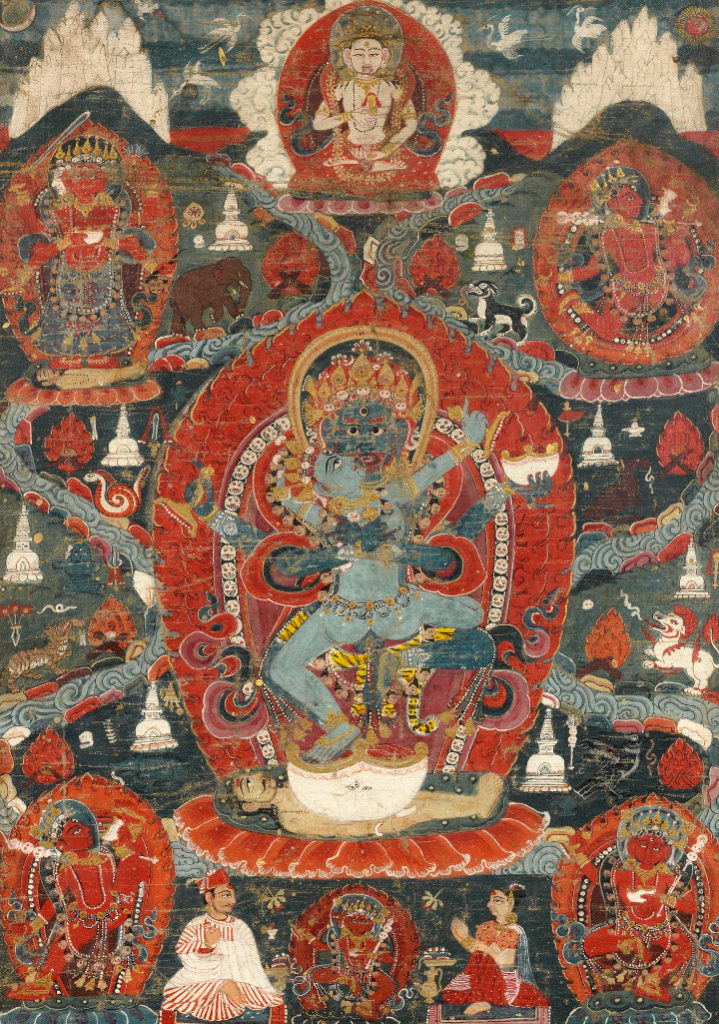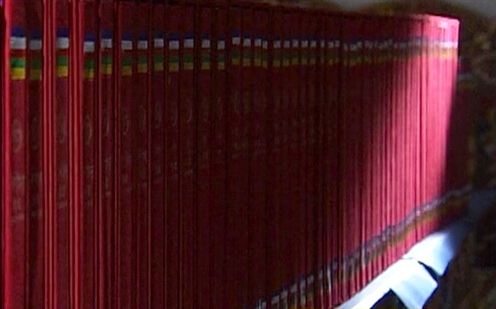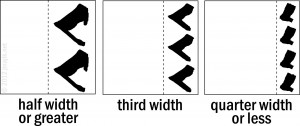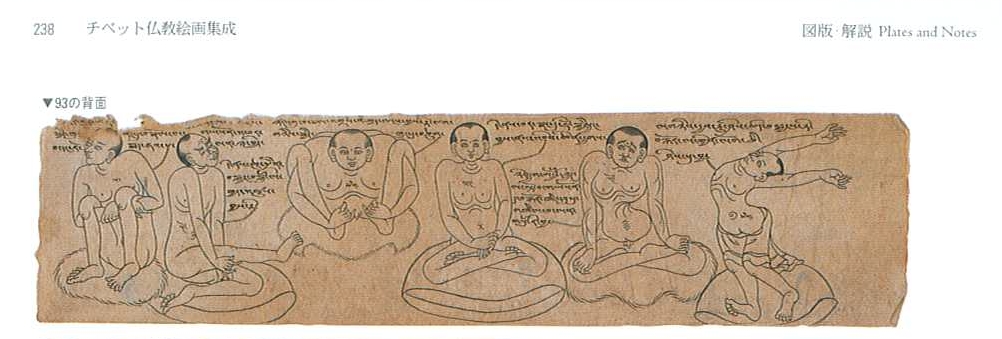Emmanuel Francis. 2018. ‘Indian Copper-Plate Grants: Inscriptions or Documents?’ In Alessandro Bausi, Christian Brockmann, Michael Friedrich, Sabine Kienitz (eds.) Manuscripts and Archives: Comparative Views on Record-Keeping. Studies in Manuscript Cultures 11. Berlin/Boston: De Gruyter, 387–417. ISBN: 9783110541397. DOI: 10.1515/9783110541397-014 [chapter]. [PDF 🔓]
The Richard R. & Magdalena Ernst Collection of Himalayan Art (2018)
The Richard R. & Magdalena Ernst Collection of Himalayan Art. Auction, 22 March 2018, 10:00 AM EDT, Sotheby’s New York. Sale Number N09800. (Part of Asia Week New York.) [official site] [PDF]
Note: This extraordinary collection contains Nepalese paintings that have received little attention or that are otherwise significant. For instance, Lot 907 (below) is identified as a painted icon of Buddhakapāla (?), which would make it the only one known in Nepal.

Cubelic et al (2018), Historical Documents from Nepal and India
 Simon Cubelic, Axel Michaels, Astrid Zotter (eds). 2018. Studies in Historical Documents from Nepal and India. Documenta Nepalica – Book Series 1. Heidelberg: Heidelberg University Publishing. ISBN 978-3-946054-70-2 (PDF), 978-3-946054-71-9. 535 pp. (Hardcover) DOI:10.17885/heiup.331.454 [PDF 🔓]
Simon Cubelic, Axel Michaels, Astrid Zotter (eds). 2018. Studies in Historical Documents from Nepal and India. Documenta Nepalica – Book Series 1. Heidelberg: Heidelberg University Publishing. ISBN 978-3-946054-70-2 (PDF), 978-3-946054-71-9. 535 pp. (Hardcover) DOI:10.17885/heiup.331.454 [PDF 🔓]
Continue reading “Cubelic et al (2018), Historical Documents from Nepal and India”
Sorensen, Legitimation and Innovation in Chöd (2013)
Michelle Janet Sorensen. ‘Making the Old New Again and Again: Legitimation and Innovation in the Tibetan Buddhist Chöd Tradition’. PhD diss., Columbia Univ., 2013. [URL / PDF]
(Texts translated: Shes rab kyi pha rol tu phyin pa zab mo gcod kyi man ngag gi gzhung bka’ tshoms chen mo; Shes rab khyi pha rol tu phyin pa’i man ngag yang tshoms zhus lan ma bzhugs pa; Shes rab kyi pha rol tu phyin pa’i man ngag nying tshoms chos kyi rtsa ba.)
International Conference on Tibetan History &c. (2013-7-13)
四川大学中国藏学研究所(会议主办)、哈佛燕京学社(会议协办): “7至17世纪西藏历史与考古、宗教与艺术国际学术研讨会”。 中国·成都·四川大学 2013年7月13-15日。
Center for Tibetan Studies of Sichuan University & Harvard-Yenching Institute (co-conveners). ‘International Conference On Tibetan History And Archaeology, Religion And Art (7th–17th c.)’. Sichuan University, Chengdu, China, July 13–15, 2013. [official site / 2nd circular w/ abstracts]
会议召集 人:霍 巍 教授(四川大学)、范德康 教授(哈佛大学)
Conference conveners: Prof. Huo Wei (Sichuan University) & Prof. Leonard W.J. van der Kuijp (Harvard University).

Continue reading “International Conference on Tibetan History &c. (2013-7-13)”
Facsimile Edition of All Palmleaf MSS in the TAR (2012?)
བོད་རང་སྐྱོང་ལྗོངས་སུ་ཉར་ཚགས་བྱས་པའི་ཏ་ལའི་ལོ་མའི་དཔེ་ཆ་ཀུན་བཏུས་པར་མ།
《西藏自治区珍藏贝叶经影印大全》(共61分册)
*Facsimile Edition of Palmleaf Manuscripts in the Tibet Autonomous Region: Complete Collection. 2012(?). 61 vols.བོད་རང་སྐྱོང་ལྗོངས་སུ་ཉར་ཚགས་བྱས་པའི་ཏ་ལའི་ལོ་མའི་དཔེ་ཆ་ཀུན་བཏུས་ཀྱི་དཀར་ཆག་བསྡུས་པ།
《西藏自治区珍藏贝叶经影印大全简目》
*Facsimile Edition of Palmleaf Manuscripts in the Tibet Autonomous Region: Complete Collection. Brief Index. 2012(?).བོད་རང་སྐྱོང་ལྗོངས་སུ་ཉར་ཚགས་བྱས་པའི་ཏ་ལའི་ལོ་མའི་དཔེ་ཆ་བྲིས་མའི་རྩ་བའི་དཀར་ཆག།
《西藏自治区珍藏贝叶经总目录》(共4册)
*Master Catalogue of Palmleaf Manuscripts in the Tibet Autonomous Region. 2012(?). 4 vols.

Continue reading “Facsimile Edition of All Palmleaf MSS in the TAR (2012?)”
Simha, Tantrākhyāna (2009)
Tulasīlāla Siṃha. Tantrākhyāna: Ne saṃ. 638 yā mūlapāṭhayā sampādana, anuvāda va vivecanā. Yala: Nepālabhāṣā Kendrīya Vibhāga, Pāṭana Saṃyukta Kyāmpasa, 2009.
This is a transcription and translation into contemporary Newar of the earliest dated manuscript of the Tantrākhyāna(kathā) kept in Nepal. An older manuscript of this Newar Buddhist Pañcatantra remake — if we could call it that — ended up in the hands of Cecil Bendall and is kept in the United Kingdom, presumably unavailable to Mr. Siṃha.
Nepalese Script in Unicode, 2: More on JTC1/WG2 N4184
Refer to: Anshuman Pandey, ‘N4184 Proposal to Encode the Newar Script in ISO/IEC 10646’, February 29, 2012 [PDF]. Previous discussion: here.
0. On the Name ‘Newar’
The name ‘Newar’ is preferable simply because most other options can be ruled out. ‘Nepalese’ is untenable, because it falsely implies a one-to-one relationship with the present-day nation-state, even though it is accurate within a certain (historically earlier) context. ‘Newari’ is a (now deprecated) name for the language – not the script, nor anything else; ‘Nevārī’ is quite meaningless, except to some Indologists.
The proposal, as I understand it, indeed deals with the Pracalita script, but has enough hooks to allow unification with proposals for other Newar scripts, such as Bhujiṅmola – hence ‘Newar’. (NB: It is not yet clear whether unification with Rañjanā – which is, strictly speaking, Indo-Nepalese, and which has a user base that includes many non-Newars, such as Tibetans – is feasible. In any case, much of the present and previous discussion about the Pracalita script is also applicable to Rañjanā.)
1. Additional Information On Glyph Names
11442 NEWAR FINAL ANUSVARA: Although this mark originates with the m-virāma mark used by East Indian scribes, in Nepal it has multivalent significance and in many contexts has nothing to do with nasalization (often being interchangeable with 1144B NEWAR GAP FILLER). Recommendation: Minimise phonetic/semantic description in favour of graphic description – maybe NEWAR SEMICOLON for want of a better term. Classify under Punctuation or Various Signs.
11443 NEWAR SIDDHI = शुभचिं (Shrestha NS 1132:21). There is no uniform name for this mark in Newar (esp. not the neologism bhiṃciṃ), nor is siddhi/añji recommended (not just because this designation is unknown in Nepal, but because usage may also vary; confusion with NEWAR OM is common). Recommendation: NEWAR AUSPICIOUSNESS MARK or similar.
11448 NEWAR COMMA = अर्धविराम (Shrestha NS 1132:24).
11449 NEWAR DOUBLE COMMA: I now think this mark can be represented with two adjacent NEWAR COMMAs. Its usual behaviour of stacking diagonally (see Fig.3) rather than horizontally should however be specified. Recommendation: Remove from the repertoire.
1144B NEWAR HIGH SPACING DOT = अल्पविराम (ibid.).
1144C NEWAR ABBREVIATION SIGN CIRCLE = संक्षेपीकरण यानाः च्वयातःगु थासय् थुगु चिं (ibid.).
1145A NEWAR FLOWER = स्वांथें ज्याःगु चिं (ibid.).
1145C NEWAR PLACEHOLDER MARK is the line-width equivalent of the NEWAR GAP FILLER (see below). Recommendation: Change name to NEWAR LINE FILLER MARK.
2. Morphology of the Gap Filler Mark
Following comments on earlier drafts of N4184, especially those of Kashinath Tamot, it should be clarified that the primary function of 1144B NEWAR GAP FILLER is not that of indicating a break in a word (as per the previous name SANDHI MARK), but rather of filling space up to the end of a line margin. (A hyphen indeed performs a space-filling operation as well as functioning as a word-breaking mark. However, I suggest that ‘hyphenation’ be dropped from the formal description of this mark to avoid confusion.)
The purpose of this mark has been obvious enough to specialists – recently see, e.g. Ishida (2011:ix), where it is called a ‘line-filler character’, Zeilenfüllzeichen. (In fact, this mark does not fill a line – this is the function of 1145C NEWAR PLACEHOLDER MARK; rather, it fills a space of less than one full glyph-width at the end of a margin, not necessarily the end of a line.) Nonetheless, it is easily seen that the mark could be confused with, e.g., a visarga, daṇḍa or similar. In earlier discussion on the proposal, its purpose has remained unclear to the user community, perhaps due to its unstable shape. Significantly, the NEWAR GAP FILLER MARK changes according to the width of the glyph. Its behaviour may be represented as follows:

Variations in this mark may therefore be regarded as contextual alternatives, rather than separate code points. I suggest, as per the diagram, that no more than three variants need be represented; although the glyph could conceivably incorporate four or more variations (e.g., five vertically stacked dots, at 20% character width), this is probably excessive.
Recommendation: It may be implemented as one code point with contextual alternates, or 3 or more code points corresponding to each quantum of width.
3. Swash Forms
Several glyphs may be alternatively represented with swash forms, created by extending elements of the glyph into surrounding white space. These forms do not require dedicated representation in an encoded repertoire; however, they should be included in any full description of Indo-Newar scribal culture, and font designers might want to incorporate them. Swash forms are often contextually invoked: they are used at the top line of a block of text (upward extension), but may also be seen on the bottom line (downward extension), and even more rarely at the right and left margins, and within interlinear white space. An example:

Characters routinely represented as swash forms include:
11432 NEWAR VOWEL SIGN U, 11433 NEWAR VOWEL SIGN UU, 11439 NEWAR VOWEL SIGN AI, 1143B NEWAR VOWEL SIGN AU, (superscribed)11428 NEWAR LETTER RA, 1143D NEWAR SIGN CANDRABINDU, 1143E NEWAR SIGN ANUSVARA– upward extension;11402 NEWAR LETTER I, 11403 NEWAR LETTER II,(subscribed)11417 NEWAR LETTER NYA, 1141D NEWAR LETTER TA, 11423 NEWAR LETTER PHA, 11425 NEWAR LETTER BHA, 11429 NEWAR LETTER LA, 1142D NEWAR LETTER SA, 1142E NEWAR LETTER HA, 1143C NEWAR SIGN VIRAMA– downward extension.
4. Revisions To Standard Forms
The following changes to standard forms are recommended – see glyphs highlighted in Fig.3, in which all glyphs have been redrawn from scratch to accord with common scribal practice. The most widespread change is that the headstroke no longer extends past the right descender (which is inconsistent with almost all scribal practice). Standard forms for VOCALIC R, VOCALIC RR, GA, SHA, dependent VOWEL SIGN II, VOCALIC R, VOCALIC RR as well as *VOCALIC L, VOCALIC LL (these should certainly be specified and named) should be altered accordingly. DIGIT ONE should also be changed in order to avoid confusion with SIDDHI.

5. Some Remaining Questions
5.2 Letter-Numerals: “There are at least 27 such Newar ‘letter numerals’… It may be possible to unify Newar letter-numbers with corresponding Brahmi characters.” The issue here, as far as I can see, is: which letter-numeral conjuncts differ from non-numeral conjuncts of the same letters (all differences should be specified). To put it another way: which letter-numeral conjuncts uniquely signify letter numerals, if any? Perhaps our European colleagues, with their extensive access to funding, institutional support and manuscript sources, could clarify the matter. (Don’t worry, we won’t hold our breath.)
5.3 “Should editorial marks be encoded on a per script basis or would be it reasonable to unify such marks in a pan-Indic block?” (Pandey 2012:13). Out of our hands, but if they aren’t unified, they should be included in the Newar block.
[rev 0.1: 2012/06/19]
Tanaka, ‘Art of Thangka 6’ (2012)
田中公明 『チベット仏敎絵画集成 : タンカの芸術 ハンビッツ文化財団蔵』 第6卷 臨川書店; ハンビッツ文化財団 15,750円
Tanaka, Kimiaki (ed.), Rolf W. Giebel (tr.) Art of Thangka: From the Hahn Kwang-ho Collection. Volume 6. Kyoto/Seoul: Rinsen Book Co. & The Hahn Cultural Foundation, 2012. 266 pp. ISBN-13: 978-4653041245 [amazon.jp / rakuten.co.jp]

Book of the Year: ‘Hardships and Downfall of Buddhism’
Giovanni Verardi (appendices by Federica Barba). Hardships and Downfall of Buddhism in India. Nalanda-Sriwijaya Series 4. Delhi/Singapore: Manohar & Institute of Southeast Asian Studies, 2011. 523 pp.
Not a very catchy title, but I doubt that something more direct (say, The Hindu Extermination of Buddhism) would have been very appealing to Singapore’s Nalanda-Sriwijaya Centre, the book’s publisher.
This book is an extraordinary achievement, all the more so for it relying only indirectly, for the most part, on scriptural and epigraphic sources. Verardi’s contribution is based on something at least as useful: first-hand observation of the key sites and remains, clearly articulated in terms of long-term patterns. It is by far one of the most important contributions to the study of Buddhism in India published in a long time — though I don’t agree with everything in it, by any means. (Given the chance, I will expand on that later.) The omission of any discussion of the Theravādins’ catastrophic role, painstakingly explained in Peter Schalk’s 2002 Buddhism among Tamils volumes, has to be regarded as particularly puzzling — at least until one sees Peter Skilling’s name in the acknowledgements. But let me be clear: Verardi, who has pursued his line of inquiry for over three decades, has succeeded in making sense out of a slew of data in a way that is unlikely to be bettered for some time.


